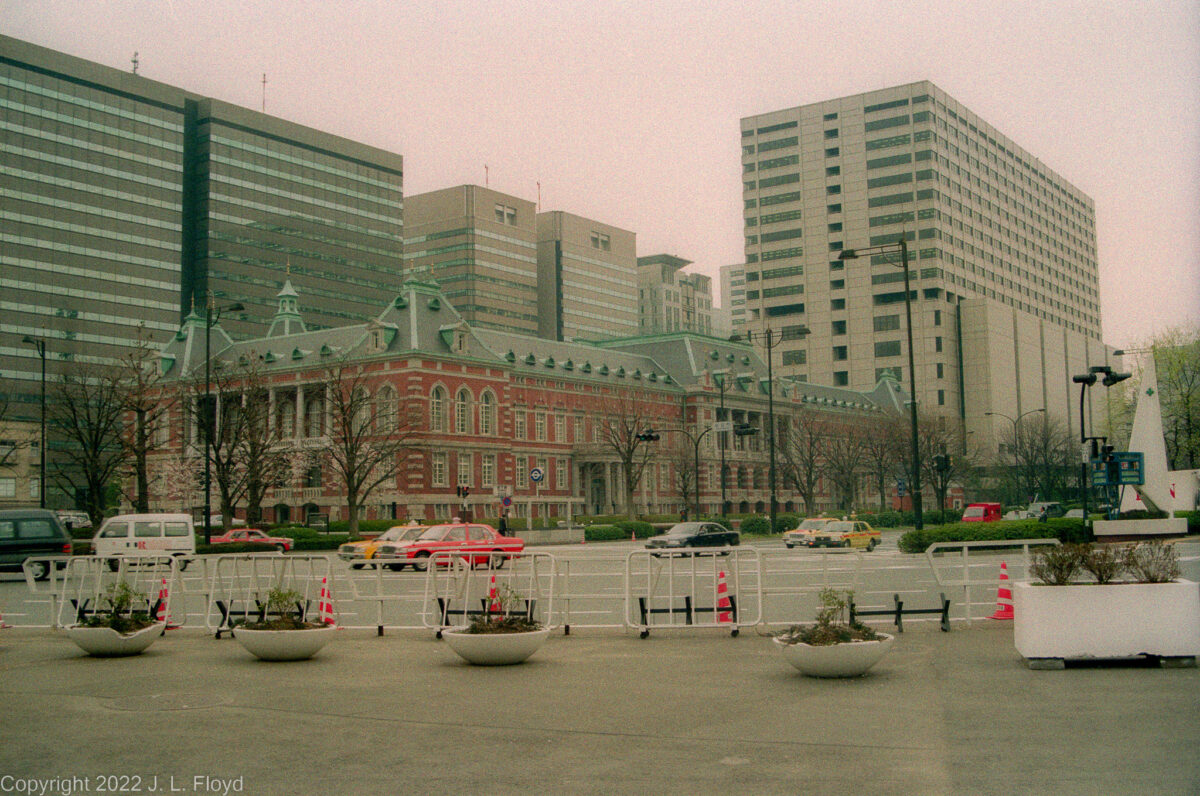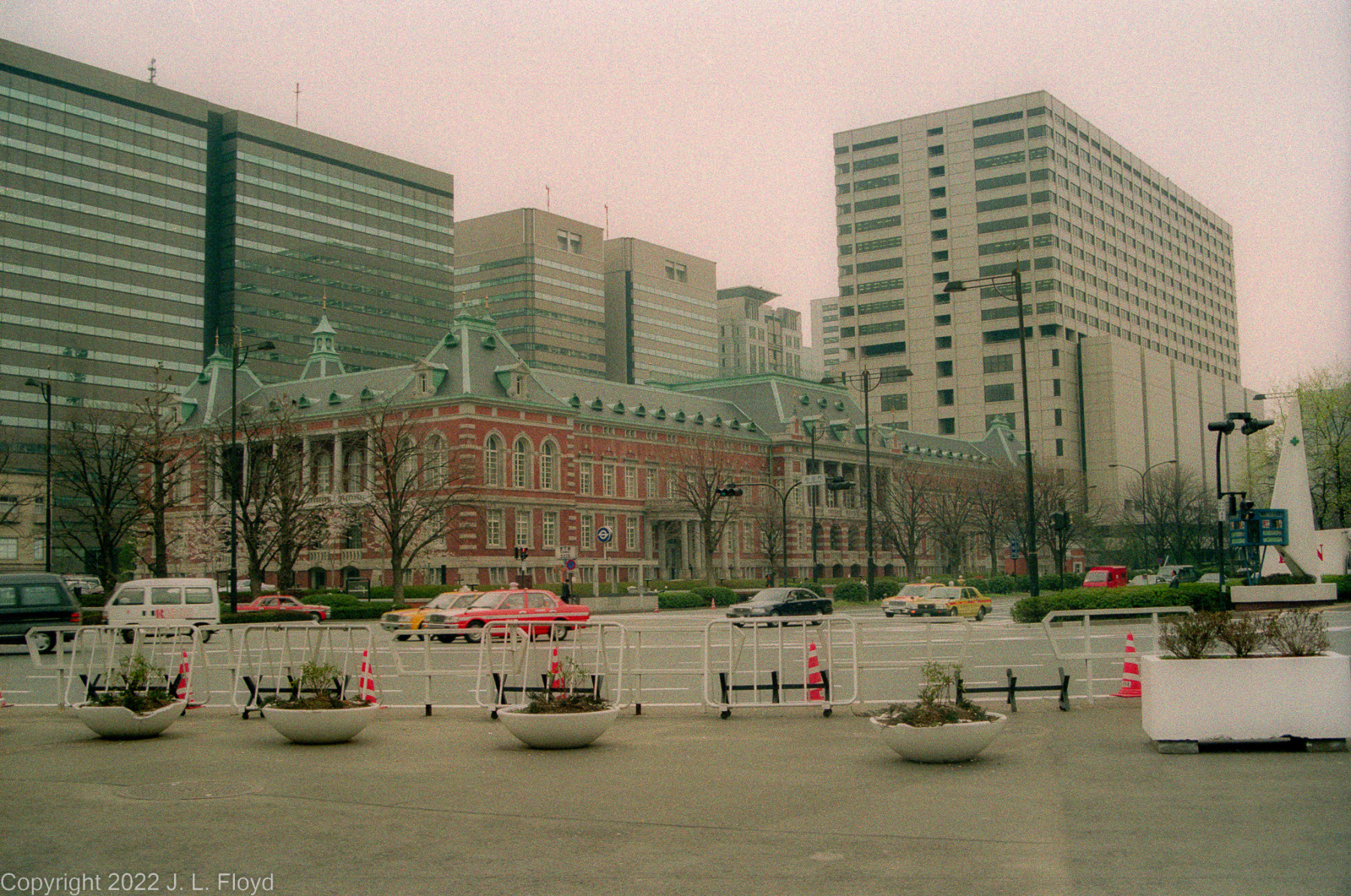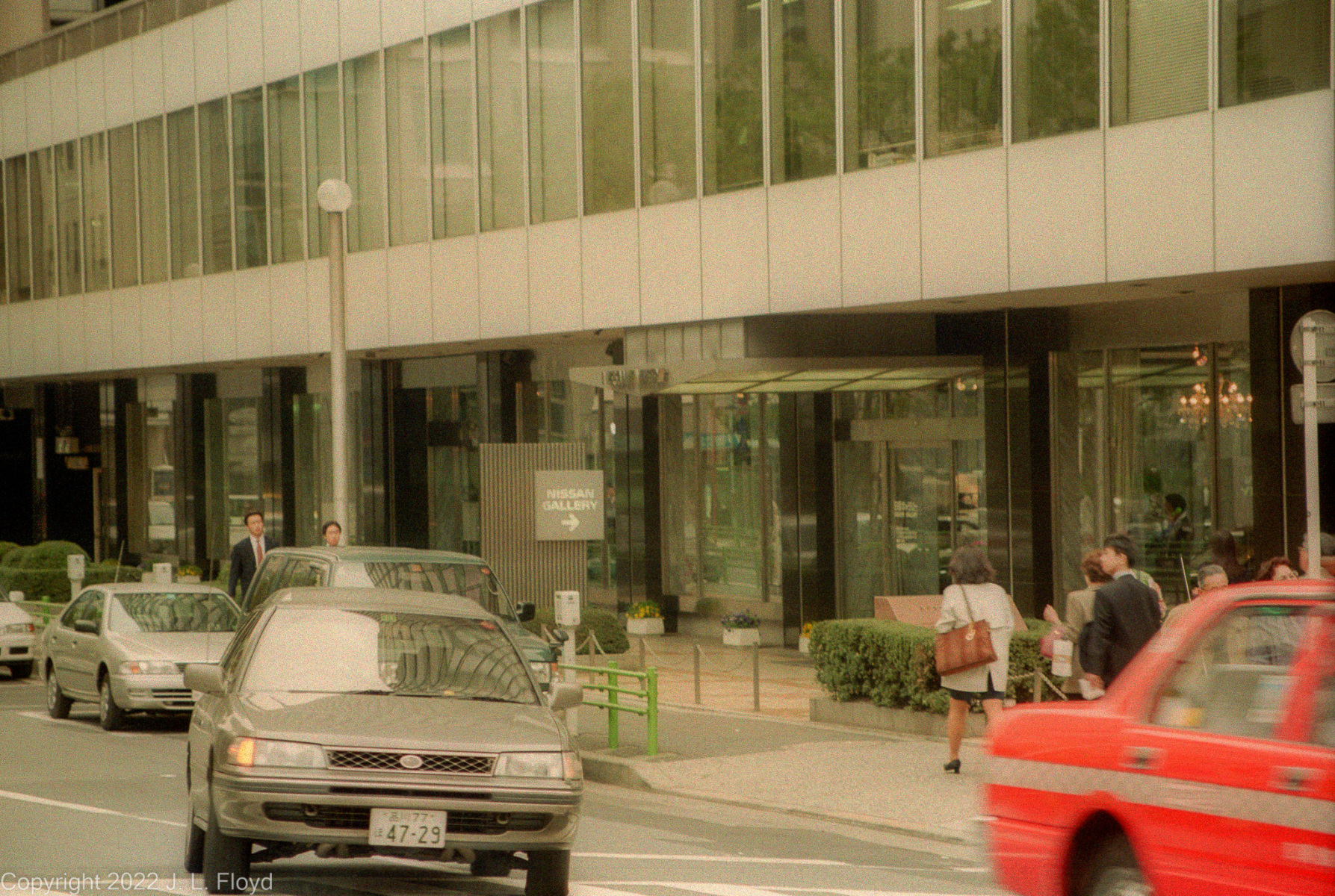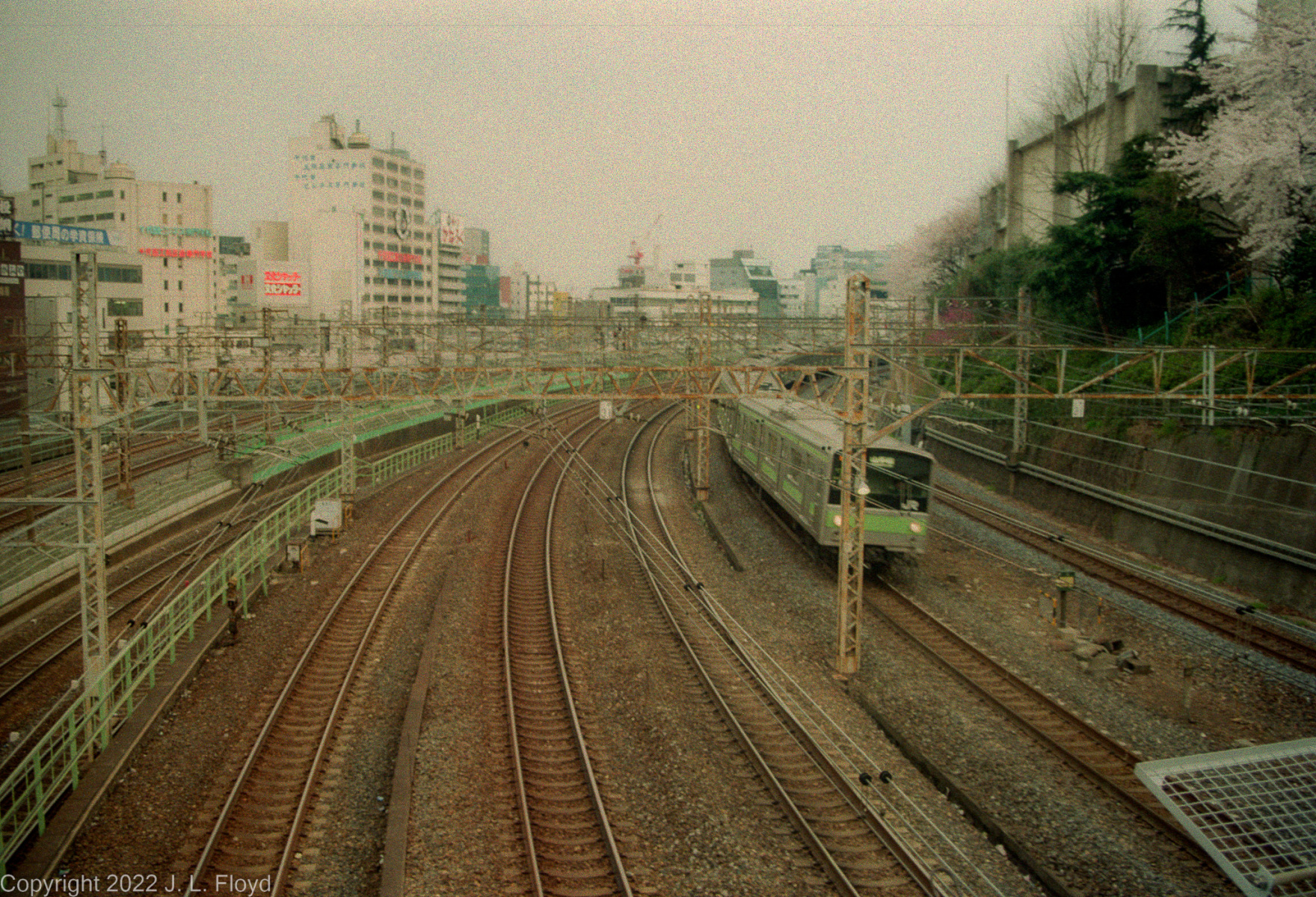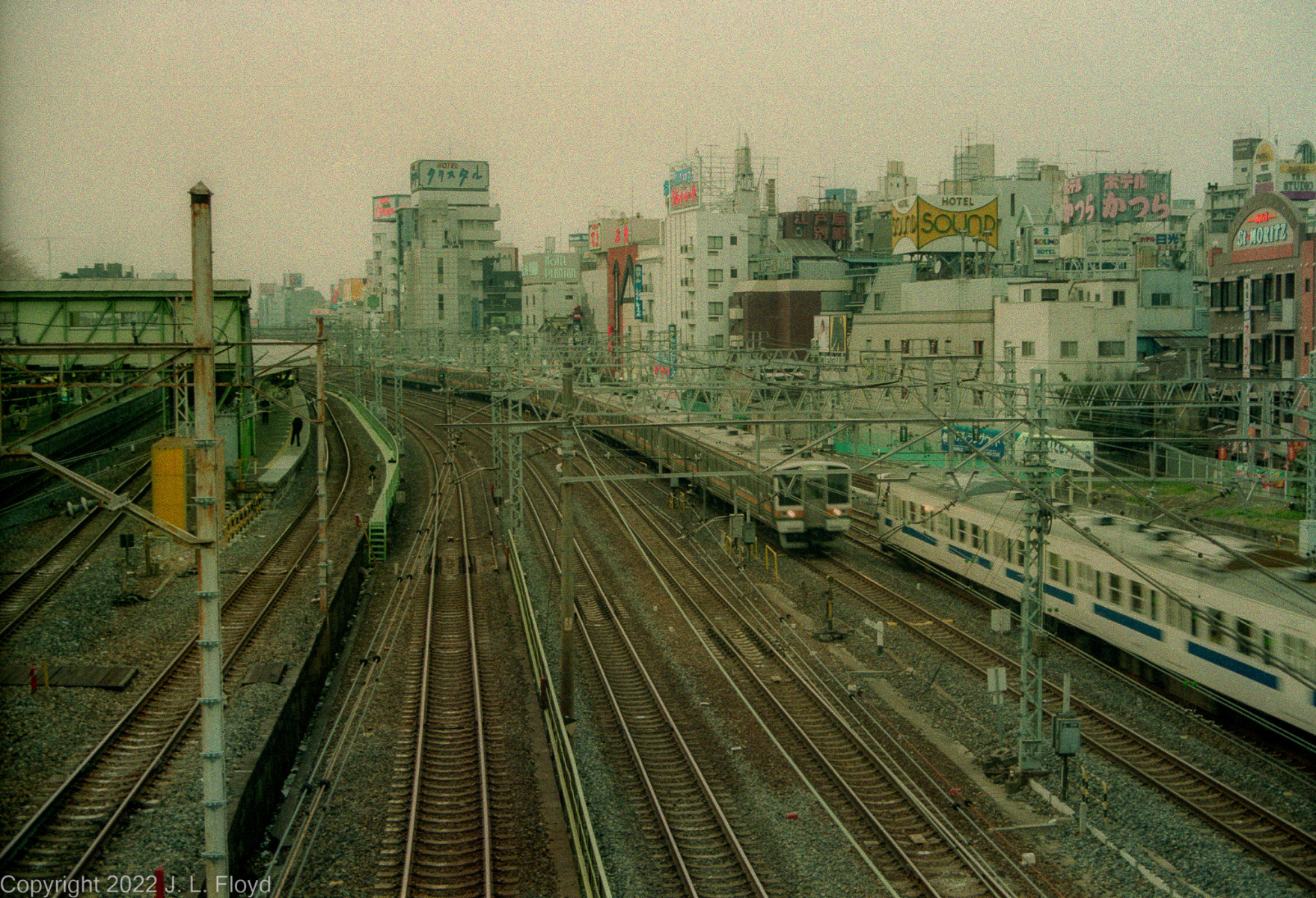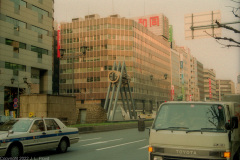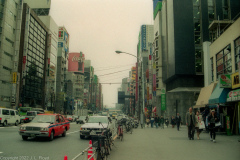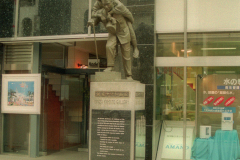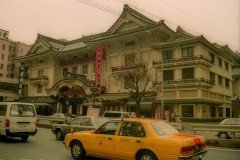On my second day in Tokyo I came down with a mild case of the flu, and it slowed me down a bit for the next couple of days. I cut short my visit to the Imperial Palace and didn’t take as many pictures as I would have otherwise. I also took it easy the next day, when I went to the Ginza via Tokyo Station, so that by the time I boarded the train for Nikko on the 12th I was feeling better.
Tokyo Station has an interesting history. The original building was built in 1914 in the Marunouchi business district, just to the east of the Imperial Palace, and had three stories with two impressive rooftop domes. An extension was opened on the east (called the Yaesu) side in 1929. In May 1945 B-29 bombing raids largely destroyed the station; it was rebuilt immediately after the war, but with only two stories and with plain peaked roofs rather than domes. That was the version I photographed during my visit. Since then, a renovation program completed in 2012 restored the Marunouchi side to its pre-WWII state, with the original three stories and the elegant domes.
From Tokyo Station I went to the Ginza, just a stone’s throw away. The Ginza is Tokyo’s famous upscale shopping, dining and entertainment district, featuring high-end department stores, elegant boutiques and art galleries, exclusive restaurants and a famous Kabuki theater, the Kabuki-za.
I was hoping to find the plaque that was supposedly placed somewhere in the Ginza to commemorate Will Adams, the English navigator who became an advisor to the shogun, but the directions I had for finding it were confusing, and in the end I didn’t feel up to threading my way through the back streets of the Ginza in search of the plaque; instead I shot a picture of a statue (I don’t remember of whom) in front of the Yamato art gallery.
I found the Ginza to be not much different from other modern shopping districts in the great cities of the world, and there wasn’t anything for sale there that I needed or wanted – or could afford to buy even if I did – so I didn’t spend much time exploring it. The main point of interest for me was the Kabukiza, which is reputed to be the outstanding place in Tokyo to see kabuki theater, one of Japan’s most distinctive traditional art forms. I don’t have any particular interest in kabuki, but the theater itself was quite picturesque and presented a pleasing contrast to the bland glass-and-steel structures prevalent in the Ginza. It also has an interesting history. It was first built in 1889, burned down in 1921, was rebuilt in 1924, destroyed by bombing in World War II, and rebuilt again in 1950. That was the version that I saw when I was in Tokyo. In 2010 it was demolished again, this time on purpose, owing to concerns about earthquake safety and accessibility. The latest version, opened in 2013, bears a reasonable resemblance to the previous incarnations.
